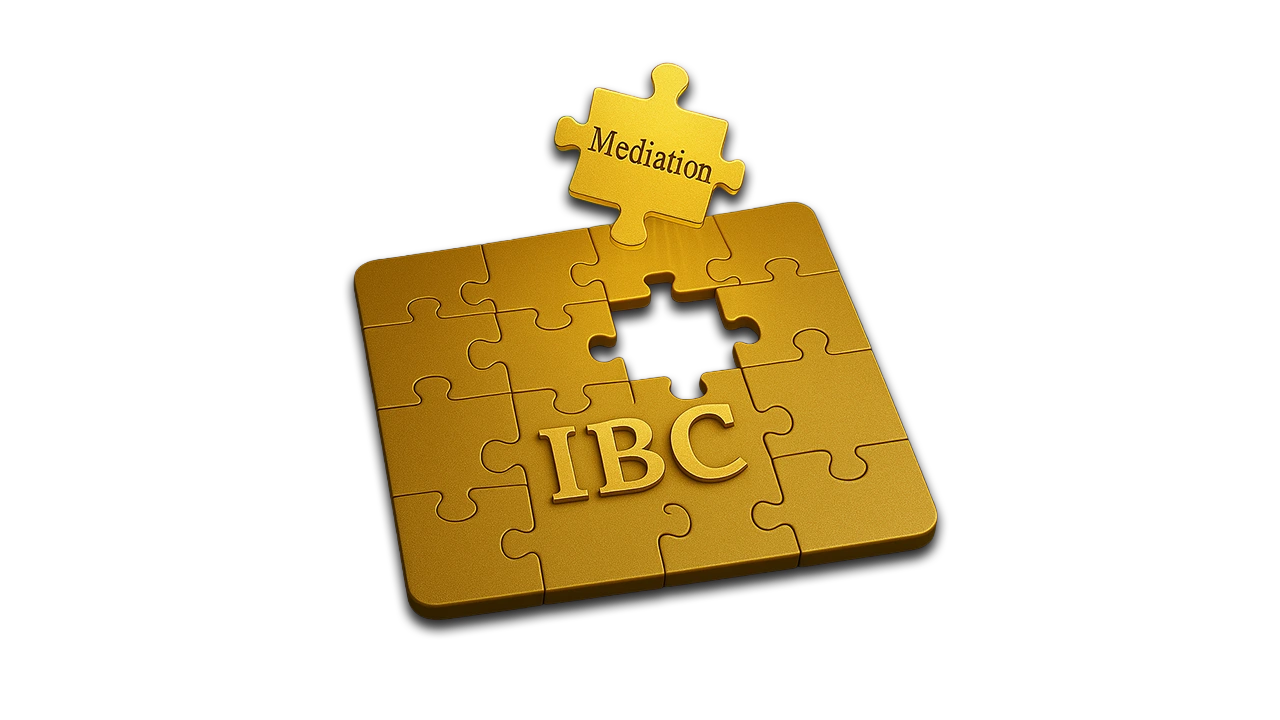Can alternative dispute resolution, specifically mediation, provide the much-needed impetus to India’s corporate insolvency resolution process, especially in light of persistent delays and overburdened tribunals? This question is fundamental for the ongoing discourse surrounding the efficacy of IBC1. While the IBC has undeniably revolutionized India’s approach to corporate insolvency, ushering in a creditor-focused regime with significantly improved recovery rates compared to previous statutes like SARFAESI Act, 2002, its journey has not been without hurdles. The ideal 330-day timeframe for CIRP2, as enshrined in the proviso to Section 12(3) IBC, often remains an elusive target. Factors ranging from the unprecedented challenges posed by the pandemic to the perennial issues of overburdened tribunals and the proliferation of litigation have collectively contributed to these unwelcome delays. Such protracted timelines not only undermine the very spirit of the IBC’s time-bound framework but also exacerbate the distress faced by businesses and creditors alike.
Consider the illustrative case of Sunil Kumar Dahiya v. Union of India3, a situation that perfectly encapsulates the conundrum. Here, a settlement was painstakingly forged through mediation, even garnering the acceptance of over 80% of the creditors. Yet, the entire resolution was thrown into jeopardy when a single dissenting creditor, on whose application the CIRP was initially triggered, challenged the mediated settlement. The corporate debtor found itself in a precarious position, grappling with the non-binding nature of the mediation outcome within the IBC framework. While the Delhi High Court, in a connected matter, Col. P.K. Uberoi (Retd.) & Anr. v. Vigneshwara Developwell Pvt. Ltd. & Ors.4, eventually upheld the scheme reached through mediation, it’s crucial to note that this resolution operated outside the strict confines of the IBC, functioning more as a revival mechanism within company proceedings before the High Court. This example starkly highlights the critical void: the absence of a clear, legally binding force for mediated settlement agreements (MSAs) within the IBC’s operational ambit. The absence of such binding power creates a fertile ground for further litigation, undermining the very essence of swift and effective resolution that the IBC strives for.
This pressing need for efficient, time-bound, and cost-effective solutions has brought the spotlight firmly onto alternative resolution methods, specifically mediation. The potential for mediation to intervene at two crucial junctures—pre-institution of insolvency proceedings and post-commencement of CIRP—is immense. By offering a less adversarial and more collaborative path, mediation could significantly alleviate the burden on NCLT5, which saw its pecuniary jurisdiction enhanced to ₹1 crore to manage the influx of cases, and empower distressed businesses to find viable solutions.
Enactment of Mediation Act, 2023, a landmark legislation is a testament to the nation’s growing embrace of mediation as a vital dispute resolution mechanism. The Mediation Act introduces a plethora of modern elements designed to bolster its effectiveness: institutional mediation for a structured approach, robust provisions for the enforcement of MSAs, the integration of online mediation for enhanced accessibility, and a framework for cross-border dispute resolution, aligning India with international best practices. Crucially, the Mediation Act also signals a progressive intent by proposing the codification of insolvency mediation under the IBC, a move currently undergoing meticulous scrutiny and discussions. This legislative foresight recognizes the inherent value mediation can bring to the complex and often contentious world of insolvency.
However, the persistent Achilles’ heel of mediation, its lack of legal binding force, has been a significant impediment, as illustrated by the Sunil Kumar Dahiya case. If MSAs arrived at through mediation are imbued with legal validity and binding enforceability, it would usher in a new era of conflict resolution within the insolvency ecosystem. Such a paradigm shift would not only curtail the seemingly endless cycle of litigation but also offer a quicker and significantly more cost-effective resolution pathway. The beauty of legally binding MSAs lies in their potential for enforcement without constant judicial intervention, thereby easing the immense burden on courts and tribunals. This aligns perfectly with the time-driven philosophy that forms the very bedrock of the IBC. As the Mediation Act steadily gains momentum, with its expansive objective to resolve disputes of “commercial or otherwise” nature, the role of mediation within the IBC framework is poised for substantial growth. This growth is anticipated to translate into a greater number of resolutions, fewer protracted legal battles, and ultimately, a more efficient insolvency regime.
The transformative potential of mediation extends to both the pre-institution and post-commencement stages of insolvency proceedings. In the “pre-commencement” phase, where a financially distressed yet fundamentally viable company seeks informal, out-of-court solutions, mediation can play an exceptionally crucial role. It can facilitate dialogue and negotiation among various creditors, resolve potential disputes before they escalate into full-blown legal battles, and foster a spirit of consensus among diverse stakeholders. This is particularly vital in preventing viable businesses from succumbing to the formal insolvency process, which can be both time-consuming and detrimental to their ongoing operations. By averting the need for formal CIRP initiation, mediation at this stage directly contributes to reducing delays and costs, thereby increasing the likelihood of successful restructuring and, consequently, delivering better returns to creditors.
In this context, Section 5 of the Mediation Act, 2023, emerges as a pivotal provision. It empowers parties to voluntarily engage in pre-institution mediation to resolve civil and commercial disputes, regardless of whether a pre-existing mediation agreement is in place, before embarking on any formal suit or proceeding in court. Furthermore, while Section 6 of the Act, read in conjunction with the First Schedule, delineates categories of disputes deemed unfit for mediation, it’s noteworthy that insolvency is not explicitly listed among these categories. This creates a “grey area” that, while not explicitly endorsing insolvency mediation, also doesn’t prohibit it, thus leaving room for its application and the subsequent question of its binding effect. However, the IBBI6 Report has highlighted that pre-institutional mediation, in its current form, would not fall within the ambit of the IBC, as the actual insolvency process is triggered only upon the occurrence of a ‘default’ and the subsequent filing of an application. This distinction underscores the need for clear legislative alignment to fully leverage pre-institution mediation within the insolvency framework.
Once the CIRP has commenced under the terms of the IBC, mediation continues to offer significant advantages. It can serve as an invaluable tool to facilitate negotiation and foster a collaborative environment among creditors, particularly in the complex task of developing and implementing a formal reorganization plan. This is especially pertinent in situations where the corporate debtor is financially sound and possesses inherent viability. In such scenarios, a settlement reached through legally binding MSAs can pave the way for creditors to opt for the withdrawal of proceedings under Section 12A of the IBC, read with Section 30A(1) of the CIRP Regulations. These provisions allow for the withdrawal of applications based on a settlement, both before and after the constitution of the Committee of Creditors, providing a crucial exit ramp from formal insolvency proceedings when a mutually agreeable resolution has been achieved.
Despite its compelling advantages, the integration of mediation into the insolvency framework is not without its limitations and challenges. A fundamental hurdle lies in the very nature of mediation itself: it is a consensual process, inherently requiring all parties to voluntarily arrive at a consensus. This raises a pertinent question: should mandatory pre-institution mediation, akin to what is outlined in Section 12A of the Commercial Courts Act, be introduced within the IBC? While mandatory mediation could potentially prevent defaults and facilitate smoother restructuring, there is a legitimate concern that it might also inadvertently extend the statutory timelines, particularly in multi-party disputes where reaching a consensus among numerous stakeholders can be a protracted affair. This could make it more challenging to adhere to the strict timelines stipulated under Section 12 of the IBC. Therefore, a gradual cultural shift in the understanding and acceptance of mediation is absolutely essential for its successful implementation. One pragmatic suggestion involves actively encouraging creditors to opt for mediation when issuing demand notices under Section 8, in the case of operational creditors, or when creditors are in the process of initiating actions under Section 7 of the IBC. The ultimate aim should be to establish a uniform practice that embraces mediation across the board within the insolvency ecosystem.
Furthermore, while MSAs are undoubtedly legally enforceable contracts, their legal protection differs from Resolution Plans that have received the approval from the NCLT. Resolution Plans, once approved by the adjudicating authority, benefit from a broader legal sanctity and protection. Therefore, there is a clear imperative to imbue MSAs with a comparable color of binding agreements, especially when parties reach a consensus either pre-institution (but post-occurrence of defaults) or even post-commencement of CIRP. As insolvency in India is a relatively nascent regime, continuously evolving through legislative amendments and judicial precedents, another significant limitation is the dearth of expert mediators specifically trained in the intricacies of insolvency law. This highlights a pressing need for dedicated institutional setups for insolvency mediation and specialized mediator training programs across India, to ensure that mediation is conducted by individuals possessing both mediation skills and a deep understanding of insolvency nuances.
In conclusion, IBC has been a transformative and groundbreaking piece of legislation for corporate insolvency in India, fundamentally reshaping the landscape of debt resolution. However, the challenges that have emerged, notably the delays exacerbated by the COVID-19 pandemic and the ever-present issue of overburdened tribunals, have starkly illuminated the undeniable need for alternative mechanisms like mediation. A phased and procedurally adaptive introduction of mediation under the IBC, drawing valuable lessons from international best practices, holds the key to bridging this critical gap.
Globally, several nations offer compelling models of how mediation can be seamlessly integrated into insolvency frameworks, striking a crucial balance between efficient resolution and stakeholder interests. The United States, for instance, extensively utilizes expert mediators in its Chapter 11 bankruptcy cases, leveraging their specialized knowledge to navigate complex reorganizations. Singapore’s progressive cross-border mediation framework, underpinned by the Singapore Convention on Mediation, ensures the enforceability of mediated settlement agreements across jurisdictions, providing a robust legal backbone. Similarly, European nations have integrated pre-insolvency resolution mechanisms into their legal systems; Italy’s Recovery Plans and France’s conciliation processes stand as prime examples of frameworks designed to facilitate private settlements before formal insolvency proceedings are initiated. India can draw invaluable lessons from these successful international models, particularly in the areas of establishing robust institutional support, developing comprehensive mediator training programs, and designing structured frameworks that complement the existing insolvency regime. By incorporating these elements, perhaps even by establishing separate insolvency mediation centers within the ambit of the tribunals themselves, India can enhance its own insolvency framework. Therefore, mediation, as a consensual, mutually agreed upon, and now, with the Mediation Act, a quicker alternative resolution process, once adopted in a phased and strategic manner, is poised to complement the Indian insolvency regime. It promises to deliver not only quicker but also legally binding resolutions, leading to an exponential closure of disputes and ultimately fostering a more efficient and effective corporate insolvency ecosystem.
Citations
- IBC – Insolvency and Bankruptcy Act, 2016
- CIRP – Corporate Insolvency Resolution Process
- W.P. (C) 11706/2019 & CM Appls. 48124/2019, 48125/2019,48126/2019
- 2020 SCC OnLine Del 399
- NCLT – National Company Law Tribunal
- IBBI – Insolvency and Bankruptcy Board of India
Expositor(s): Adv. Khushboo Saraf






